Claude Monet (1840-1926)
Get a Monet Certificate of Authenticity for your painting (COA) for your Monet drawing.
For all your Monet artworks you need a Certificate of Authenticity (COA) in order to sell, to insure or to donate for a tax deduction.
Getting a Monet Certificate of Authenticity (COA) is easy. Just send us photos and dimensions and tell us what you know about the origin or history of your Monet painting or drawing.
If you want to sell your Monet painting or drawing use our selling services. We offer Monet selling help, selling advice, private treaty sales and full brokerage.
We have been authenticating Monet and issuing certificates of authenticity since 2002. We are recognized Monet experts and Monet certified appraisers. We issue COAs and appraisals for all Monet artworks.
Our Monet paintings and drawings authentications are accepted and respected worldwide.
Each COA is backed by in-depth research and analysis authentication reports.
The Monet certificates of authenticity we issue are based on solid, reliable and fully referenced art investigations, authentication research, analytical work and forensic studies.
We are available to examine your Monet painting or drawing anywhere in the world.
You will generally receive your certificates of authenticity and authentication report within two weeks. Some complicated cases with difficult to research Monet paintings or drawings take longer.
Our clients include Monet collectors, investors, tax authorities, insurance adjusters, appraisers, valuers, auctioneers, Federal agencies and many law firms.
We perform Claude Monet art authentication. appraisal, certificates of authenticity (COA), analysis, research, scientific tests, full art authentications. We will help you sell your Claude Monet or we will sell it for you.
Is There an Undiscovered Monet Somewhere?

We appraise, authenticate and offer certificates of authenticity for works by Claude Monet. Caricatures
Before he left Le Havre and moved to Paris in 1859, Claude Monet was a caricaturist. Here in his own words, is what he did:
“I ornamented the margins of my text books, I decorated the blue paper of my exercise books with ultra fantastic designs and represented in the most irreverent manner possible, the features of my masters—either drawing their faces in front view or in profile.
“I became very quickly adept at this game. At fifteen, I was known by the whole of Le Havre as a caricaturist. My reputation was so well established that I was commissioned by everyone for these types of portraits. It was in effect, in consideration of the sheer number of commissions that I received as well as the insufficiency of the allowance that I received from my mother, that prompted the audacious decision that I made to charge a fee for my portraits. This of course, scandalized my family. I would charge ten to twenty francs depending on whether I liked the look of my clients or not and this method worked extremely well. In a month, the number of clients had doubled and I was able to charge a fixed rate of twenty francs without reducing in any way the demand. Had I continued this way, I would today be a millionaire!
“Thus, by this means, I became someone of importance in the town. There, along the shop front of the only framers in business at Le Havre, were my caricatures, insolently sprawled-out in groups of five or six, to be seen in full in little gold frames, under glass like real works of art. Moreover, when I saw strollers gathering to gap at them with admiration and cry “It is so and so!”, I was bursting with pride.”
Obviously, all these many caricatures executed between about 1854 and 1859 have not been accounted for.

It would be 30 years before Monet would enjoy a small measure of success in Paris and 50 before he received enough recognition that someone in Le Havre could have heard of him.
What happened to the many caricatures during these 50 years? As people died and their estates were sold, some may well have ended up in some little antique shops in Le Havre, to be purchased later by American tourists arriving to the city on the big transatlantic liners.
The famous Compagnie Generale Transatlantique was founded in Le Havre in 1855 and by 1864 there was regular and busy service to New York. For the next 80 years millions of transatlantic tourists would pass through Le Havre.
Of course, there are countless other possibilities. Some of the early unframed caricatures were probably stuck in some books and someone somewhere may still be using today, unknowingly, a Monet drawing as a page marker.
The Boudin Period
There is another possibility.
In 1858 Monet met Eugene Boudin in the frame shop which sold both of their works. Monet’s caricatures and Boudin’s little landscapes. Monsieur Gavier, the framer, introduced them.
Soon, the two began to paint together, outdoors, en plein air. These were the very first of Monet’s landscape paintings.
Here is the earliest one we known of: View of Rouelles, done in 1858 and which he exhibited at the municipally sponsored art exhibition in Le Havre in the same year. It was the first painting he ever exhibited.
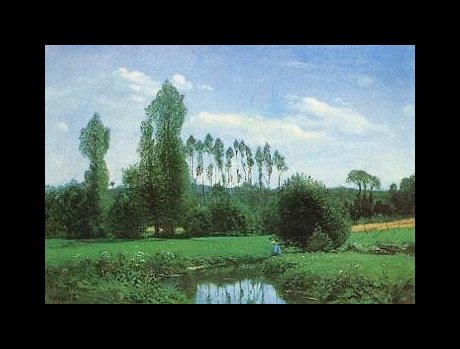
Is it possible that some other landscapes executed before Monet moved to Paris in 1859 stayed behind in Le Havre?
Yes, indeed, because we certainly do not have enough paintings to account for all he must have painted with Boudin during 1858 and 1859. Surely this lone painting he exhibited in 1858 is not the one and only he executed in the course of almost two years.
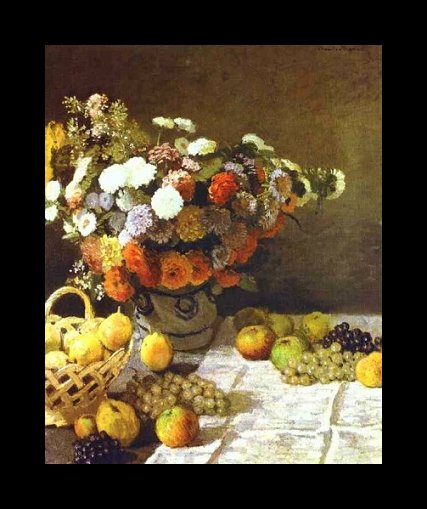
The Fakes That Are Not
Then, we have the intriguing fact that in the late 1800s Monet was advertising in French newspapers, offering paintings of trees, cathedrals and haystacks. Furthermore, he indicated that each would be unique because he would paint each one in different shades and colors. Essentially, these were copies he made of some of his works which have by now become so famous, but they were executed in different colors. It is almost certain that some of the paintings which have been rejected as fakes, are indeed authentic Monet works.
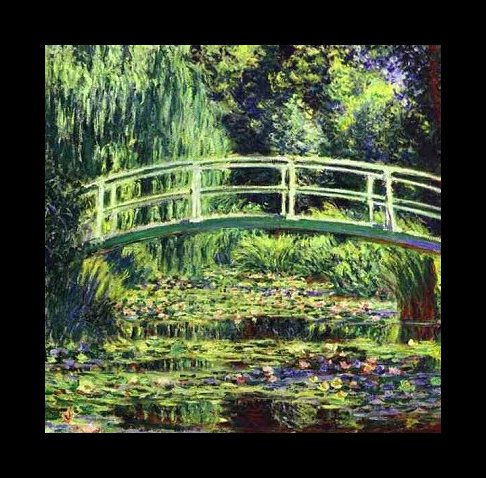
We do not know how many such copies Monet painted and sold through his classified ads. We also do not know if they were of inferior quality.
Monet painted quickly before his eyesight became so poor that all he saw were blurry color masses. During a stay at Fresselines with the poet Maurice Rollinat he executed 23 paintings. On his trip to Zaandam, in Holland, in 1871, he executed some 20 and another 12 from what seems to have been a quick tour of Amsterdam. This is to say that Monet could probably have turned a copy of one of his own paintings in a few hours.
The American Connection
By 1886, Durand-Ruel, Monet’s dealer, is doing so poorly trying to sell paintings in France, and is such dire financial straights, that he decides to try to sell some paintings in America. He organizes an exhibition of 300 paintings in New York at the American Art Association. Among them are 49 works by Monet and the exhibition is a success. American art Critics are ecstatic. Americans fall in love with impressionism. The next year, another 12 paintings by Monet are included in a new American exhibition.
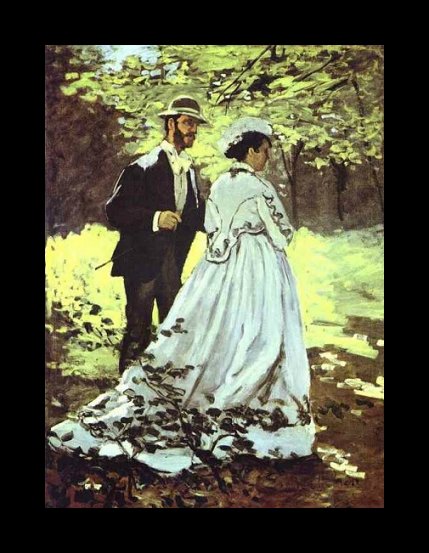
From this point on, we lose a precise count of how many Monet paintings are sent to America. One thing is certain, it is a very large quantity and it can be measured by the quick changes in Monet’s lifestyle.
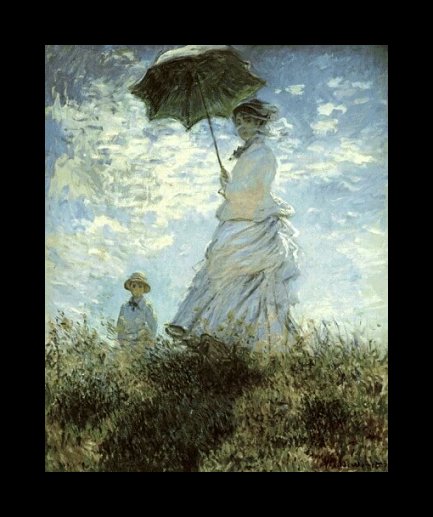
American money allowed him to buy his house, additional land, to build his famous garden, greenhouses, additional buildings, to divert a stream for his pond, to build a Japanese bridge, a second studio and eventually to hire 6 full time gardeners. He was also able to travel, going to Norway and several times to London.

He entertained groups of friends who stayed for several days. Eight children and grand children lived with him. More often than not, 25 or 30 people were eating and living, and eight or nine were receiving wages, on his property at Giverny. So we know that many paintings went to America, for Monet to have been able to do all this and to maintain this opulent lifestyle.

Has every single painting sold to an American buyer in the 1880s and 1890s been accounted for? For now we know of exactly 2,050 paintings and about 500 drawings by the father of impressionism. It seems reasonable to think that another little Monet, waiting to be discovered, is quietly sleeping somewhere.
Reviews
1,217 global ratings
5 Star
4 Star
3 Star
2 Star
1 Star
Your evaluation is very important to us. Thank you.
